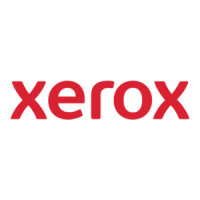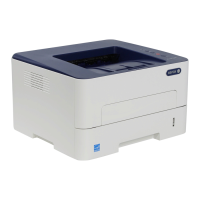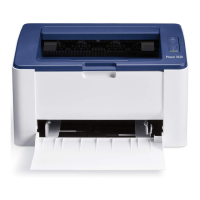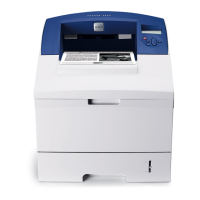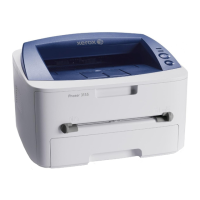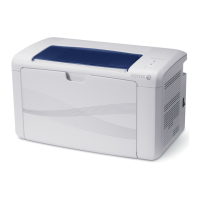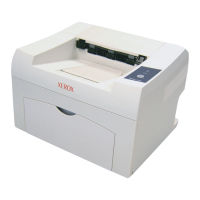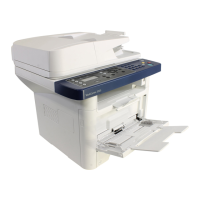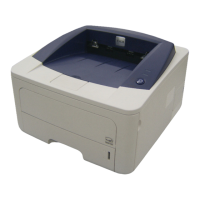





Do you have a question about the Xerox Phaser 3250 and is the answer not in the manual?
| Color | No |
|---|---|
| Print technology | Laser |
| Maximum resolution | 600 x 600 DPI |
| Warm-up time (from sleep mode) | 15 s |
| Time to first page (black, normal) | 8.5 s |
| Print speed (black, normal quality, A4/US Letter) | 28 ppm |
| Internal memory | 32 MB |
| Maximum internal memory | 160 MB |
| Sound power level (standby) | 29 dB |
| Sound pressure level (printing) | 54 dB |
| Total input capacity | 251 sheets |
| Maximum input capacity | 501 sheets |
| Paper tray media types | Bond paper, Envelopes, Labels, Plain paper, Recycled paper, Transparencies |
| Functions | |
| I/O ports | USB 2.0 |
| Device manager | Printer Setting Utility for Windows |
| Package length | 561.33 mm |
| Depth (imperial) | 14.5 \ |
| Width (imperial) | 14.3 \ |
| Height (imperial) | 9.4 \ |
| Weight (imperial) | 26.19 lbs |
| Power requirements | 240 V, 50/60 Hz |
| Storage drive type | N/A |
| Hardware scan resolution | 1200 x 1200 DPI |
| Storage temperature (T-T) | 32 - 104 °F |
| Power consumption (active) | 400 W |
| Compatible operating systems | Fedora Core 1, Red Hat 9, SUSE 9 Windows 2000/Vista |
| Non-operating relative humidity (non-condensing) | 20 - 80 % |
| Country of origin | China |
| Maximum duty cycle | 30000 pages per month |
| Recommended duty cycle | 4000 pages per month |
| Sustainability certificates | ENERGY STAR |
| Power consumption (standby) | 70 W |
| Power consumption (PowerSave) | 11 W |
| Operating temperature (T-T) | 10 - 32 °C |
| Operating relative humidity (H-H) | 10 - 80 % |
| Certification | CE, UL 60950-1/CSA 60950-1-03, EMC 2004/108/EC, 2006/95/EC |
| Package width | 472.43 mm |
| Package height | 342.89 mm |
| Package weight | 11884.3 g |
| Depth | 369 mm |
|---|---|
| Width | 364 mm |
| Height | 239.2 mm |
| Dimensions (WxDxH) | 364 x 369 x 239.2 mm |
Provides an overview of the Xerox Phaser 3250 Laser Printer's architecture, speed, resolution, and options.
Compares the features and specifications of the Phaser 3250D and 3250DN printer models.
Overview of the Phaser 3250's monochrome laser technology and system components.
Illustrates the media path from the feeders through the printer's internal assemblies.
Provides a service checklist for technicians, covering problem identification to final checkout.
Correlates printer error messages with diagnostic aids and troubleshooting procedures.
Lists possible errors, their descriptions, and page references for corrective procedures.
Details troubleshooting procedures for Paper Jam 0, Paper Jam 1, Paper Jam 2, and Duplex Jam.
Covers troubleshooting for errors related to paper presence and feeding, like No Paper Error.
Addresses errors related to consumables and maintenance parts, such as Fuser or Print Cartridge issues.
Troubleshoots errors related to motor operation, cover status, and laser unit readiness.
Focuses on troubleshooting print-quality errors, such as vertical lines appearing curved.
Addresses issues where the printer is on but not printing, including command response problems.
Guides on troubleshooting AC power issues and no power conditions for the printer.
Provides guidance on print quality issues related to toner, including redistributing toner.
Discusses print quality defects attributed to components, consumables, media, software, and environment.
Provides initial checks for printer condition, toner levels, and cleaning procedures.
Lists checks prior to troubleshooting image quality, including cleaning the laser unit and transfer roller.
Lists print quality defects, their definitions, and the corresponding corrective procedure pages.
Troubleshooting steps for print density that is too light, including checking toner and temperature.
Troubleshooting steps for when the entire image area prints black.
Addresses print density issues that are uneven between the left and right sides of the page.
Troubleshooting for light gray dusting contamination appearing on the page.
Addresses ghosting artifacts occurring at specific intervals from the OPC drum.
Troubleshooting for ghosting artifacts occurring at specific intervals across the entire print.
Addresses ghosting artifacts occurring at specific intervals, potentially related to the fuser.
Troubleshooting steps for faded or non-printed lines along the process direction of the page.
Addresses faded or black lines along the paper travel direction, potentially from the transfer roller.
Troubleshooting for black lines parallel to the print's leading edge.
Addresses dark or blurry toner spots due to incomplete fusing or print cartridge issues.
Troubleshooting for stained backgrounds on the front side of the printed page.
Addresses stained backgrounds on the back side of the printed page.
Troubleshooting steps for when the entire image area prints blank.
Outlines general procedures for checking, servicing, and repairing the printer.
Provides instructions for removing the print cartridge, with cautions about light exposure.
Step-by-step guide for downloading and installing printer firmware updates.
